I’ve always been a reluctant seed saver. Even though I’ve been growing flowers, vegetables and herbs from seed for many years now, I save seeds from very few of them. In some cases I’m not willing to give up any flowers in order to allow the plant to produce seed, but most of the time it’s because I’m not always clear on how or when to collect seed and apparently I’m too lazy to bother researching it.
The seed I have collected in the past is dead easy to collect. Open an envelope, turn a seed pot over into it and shake.
Breadseed poppies (Papaver somniferum), which I grow as much for the seed pods as I do for the flowers, are the easiest of all seeds to save. When you can hear the seeds rattle in the pod, they are ready and they’ll fall right out like a pepper shaker.
Last year I also saved seed from one of my must-have annuals: Nicotiana alata ‘Lime Green’. It, too, is easy to save by dumping out the tiny pods, which give way to absolutely minuscule seeds by the hundreds. This winter I started both newly purchased seed and my saved seed under grow lights.
When I started looking at the Nicotiana now starting to put on a show in my garden I recognized both N. alata ‘Lime Green’ and N. langsdorfii, but there was an interesting new form growing from some of the seeds I had saved.
Its flowers are larger than N. langsdorfii but smaller than N. alata. They hang down and are a bright chartreuse like the former, but they are shaped like the latter. In other words, it’s a combination of some of the best attributes of each of its parents.
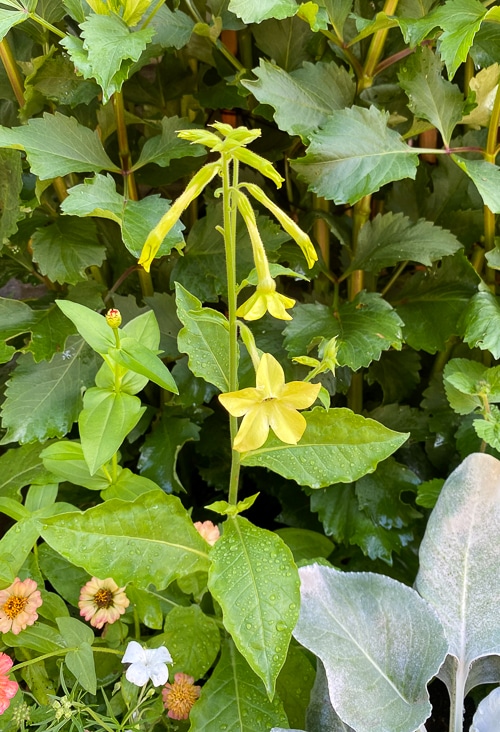
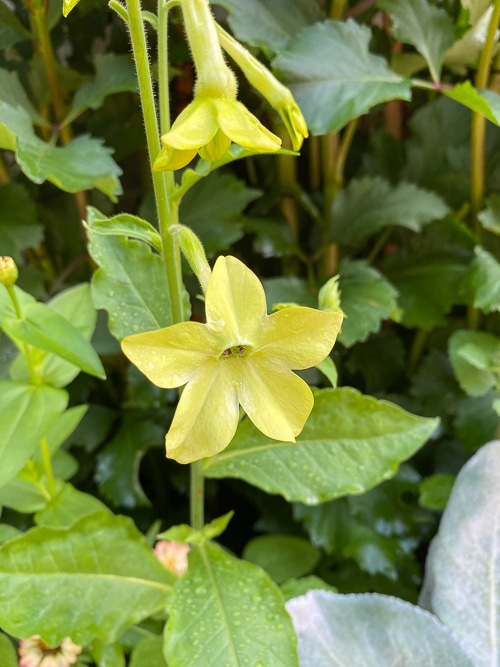
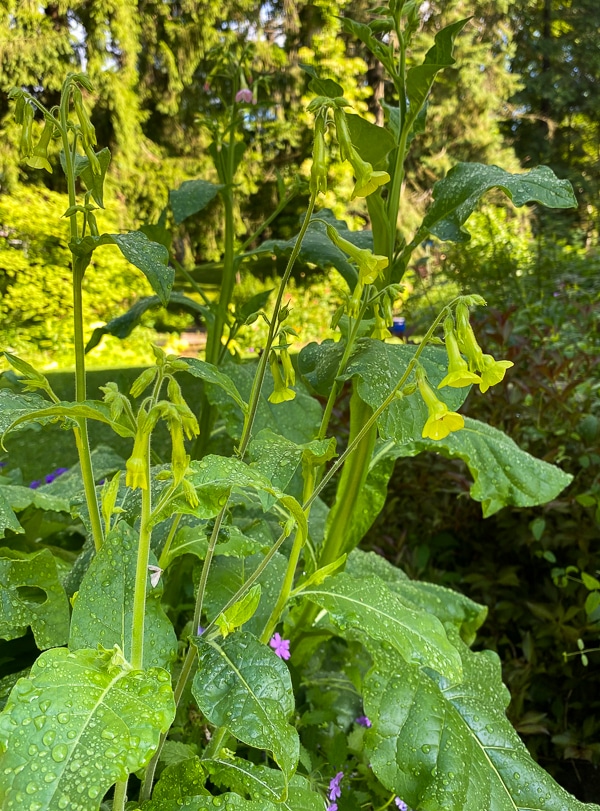
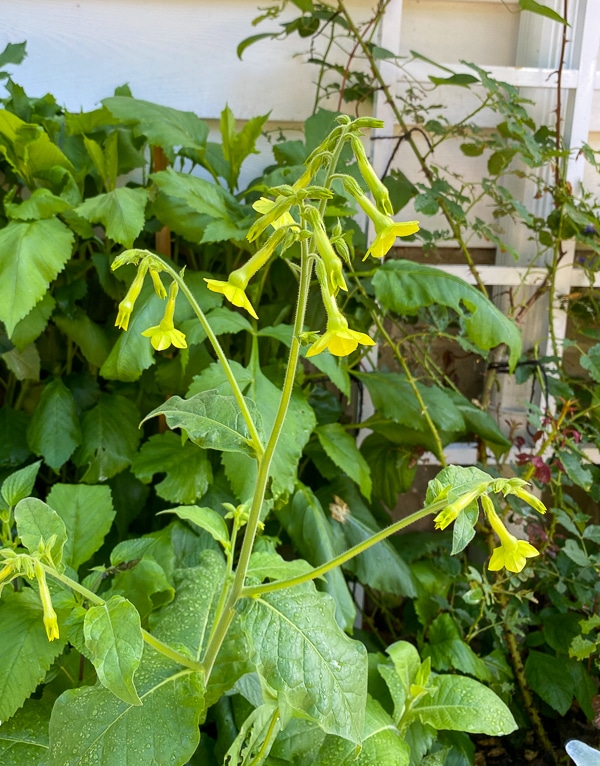
Eureka! I created a new plant. Sadly, however, my elation was short lived.
Just minutes after excitedly posting about my discovery on Instagram — as one does — a plant friend sent me a bubble-bursting message. He had created the same Nicotiana.
I was already working on unofficial names for my newly discovered variety when Matt Mattus, who literally wrote the book on flowers — Mastering the Art of Flower Gardening — told me that N. langsdorfii is “notoriously variable.” In other words, there’s little chance that seeds I save from that plant will look the same next year. Matt’s note reminded me that I’d heard of a similar Nicotiana situation on the Gardenangelists podcast.
Such is the nature of growing plants from seed. Many are the whim of those fabulous pollinators, which flit around and, well, create new hybrids. This is equal parts disappointing and charming, maybe even a little exciting.
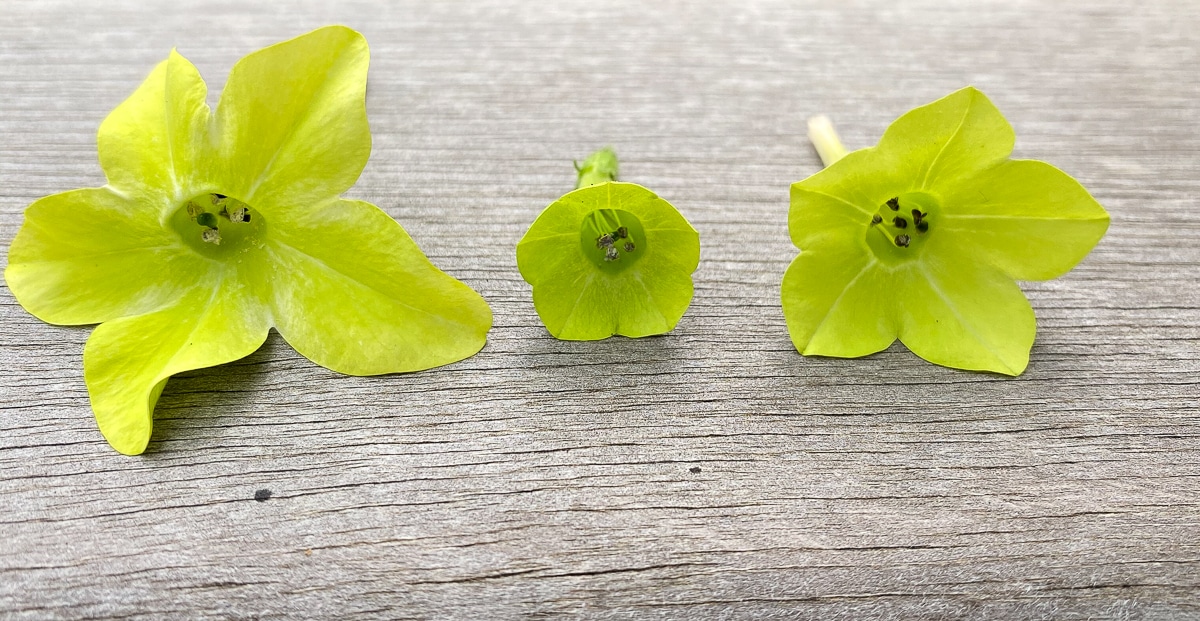
If I was up for growing it from root cuttings, thus cloning the plant (I’m not), I’d be assured the same plant in the future. Matt offered another option. I could save the seed and then plant it en masse — in all seriousness he suggested an acre, but offered that a 50-foot row might do — flagging the five or so best plants every year and then repeating the process year after year. If I could find one that was sterile and stable I could patent it.
All of a sudden this plant breeding gig doesn’t seem so exciting. I’ll still save seed from my Nicotiana child and grow it next year to see what happens. And on the little envelope of seed I collect, I’ll write what I might have called it: Nicotiana alata x langsdorfii ‘Impatient’.


11 Responses
Hey Erin, thank you for the shoutout. Yes, we had that very thing happen in our gardens too. Slightly different bloom, same verse. It is rather thrilling though. I also had the lime-green-leaved ones just show up one year. No, I didn’t plant the seed. I think they’re as promiscuous as hellebores. ~~Dee
when i am read your artical i am very like its very good job
supper work.very useful and unic for gardening
Love your plant and its name. Last year I had some almost brown blackish fronds on one of my Japanese painted ferns. Watched them all summer as they seemed like they were fine and not dying or anything. Alas not a sight of those fronds on the plant or nearby this year. As you say, fun while it lasted. I can’t even start seeds so propagating will never happen. Love the first image with the low peachy flowers. Do you have Matt’s flower book? Just discovered it when I read his blog on lilies yesterday.
There are many things I would do if it weren’t for the work involved. 😉 It is interesting that you even noticed this little detail that was happening in your garden as busy as you are. I hope you have the time and energy sometime to do such a great project.
Come on Erin. It’s only an acre ?. You need to do it just to get that name published ?. This was a great post. I thoroughly enjoyed it. Well done.
Love your cultivar name!!! ❤️
My mother had some plant propagation going on during my childhood. This was the era of African Violets. She had many and they were all either pink or purple. They are houseplants of course. I had a parakeet named Perry. We would let Perry out of his cage and it was in the same big glassed in room as Mama’s violets. The strangest thing began to occur. Violets began producing odd looking blooms….purple and white stripes! My mother had done nothing different. But then she figured it out. Perry loved to fly over and land in the middle of a violet and eat the blooms. Then he would move on to another plant. If you didn’t catch him at it he would work his way through all of them. She decided Perry was cross-pollinating the violets with his feet!
Ken Druse wrote a great book, “Making More Plants”, with propagation methods for hundreds of ornamental plants.
I’m your exact opposite! I also live in southeastern WI, but find all things about plant propagation exciting! I collect seeds, winter sow them, take softwood cuttings, have a 6’ long propagation box, and started hand-pollinating my day lilies last year! I’ve also been saving seeds from a couple of veggies. This year, I winter sowed squash and bell pepper. I’m going out in a few minutes to check my squash for new flowers to hand-pollinate them. Of course, I’m retired and all this takes time. But the results are awesome! I’ve been giving away plants to friends and family too. I don’t have a big business operation, but I’m having a great time learning about it all.
Oh gosh Erin, you were so close to being famous!!!?